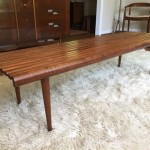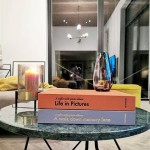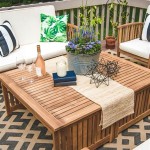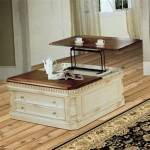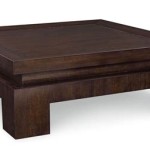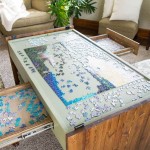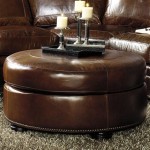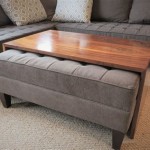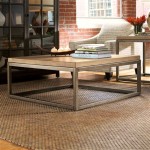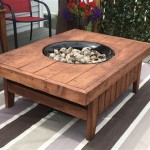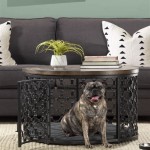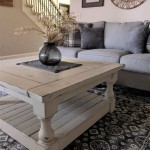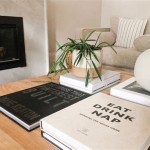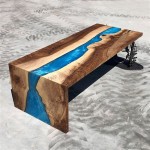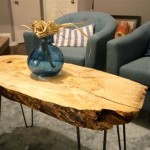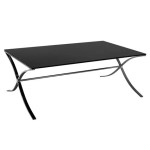How to Decorate a Round End Table: A Guide to Style and Function
Round end tables offer a versatile and often overlooked opportunity to enhance a room's aesthetic and functionality. Moving beyond simple utility, the strategic decoration of a round end table can contribute significantly to the overall design narrative of a living space. This article will explore various approaches to decorating a round end table, focusing on balance, color, texture, and practical considerations.
The selection of decorative elements for a round end table should be carefully considered to ensure a cohesive and visually appealing display. Factors such as the table's size, material, and placement within the room are crucial determinants in shaping the decoration strategy. Equally important is understanding the function the table is intended to serve; is it primarily a decorative piece, or does it need to accommodate practical items such as lamps, books, or beverages?
Before embarking on the decoration process, it's essential to assess the existing decor of the room. Observe the dominant colors, textures, and styles. An end table decoration scheme should complement these existing elements, creating a harmonious and balanced visual experience. It is generally advisable to avoid clashing colors or styles that might disrupt the overall ambiance of the room.
Achieving Balance and Visual Harmony
One of the most fundamental principles of decorating a round end table is achieving visual balance. Unlike rectangular or square tables, the circular shape of a round end table lends itself particularly well to symmetrical or carefully asymmetrical arrangements. An imbalanced arrangement can create a feeling of unease or disorder within the space.
A balanced arrangement typically involves distributing visual weight evenly around the table's surface. This can be achieved through the use of varying heights and sizes of objects. For instance, a tall lamp on one side of the table can be counterbalanced by a stack of books topped with a decorative object on the other side. The goal is to create a sense of equilibrium that is pleasing to the eye.
Asymmetrical balance, on the other hand, relies on creating balance through the strategic placement of items with different visual weights. This approach can be more dynamic and interesting than symmetrical balance but requires careful consideration to avoid creating an unbalanced or cluttered look. A larger, heavier object might be placed off-center, with smaller, lighter objects arranged around it to create a sense of balance.
The concept of the "rule of three" is often applied in decorating round end tables. This rule suggests that arrangements of three objects (or multiples of three) are generally more visually appealing than arrangements of two or four. This is because odd numbers tend to create a more dynamic and interesting composition.
Furthermore, consider the scale of the objects relative to the table itself. Overly large objects can overwhelm the table, while overly small objects can appear insignificant or lost. Strive for a proportional relationship between the objects and the table's surface area. A general guideline is to leave some negative space around the objects to prevent a cluttered appearance.
The height of the objects is also a crucial factor. Varying heights can add visual interest and prevent the arrangement from appearing flat. A tall lamp provides height, a stack of books provides mid-range elevation, and a decorative object, such as a small bowl or tray, can provide a lower visual anchor.
The color palette used on the end table should complement the overall color scheme of the room. This does not necessarily mean matching the colors exactly, but rather choosing colors that harmonize with the existing decor. Consider using analogous colors (colors that are next to each other on the color wheel) or complementary colors (colors that are opposite each other on the color wheel) to create a visually appealing contrast.
Strategic Use of Color and Texture
Color and texture play a vital role in enhancing the visual appeal of a round end table decoration. These elements can add depth, dimension, and personality to the arrangement.
The choice of colors should be informed by the existing color scheme of the room. If the room has a neutral color palette, the end table can be an opportunity to introduce pops of color. This can be achieved through the use of colorful lamps, decorative objects, or artwork.
Conversely, if the room already has a vibrant color scheme, the end table decoration might benefit from a more subdued color palette. This can help to create a sense of balance and prevent the room from feeling overwhelming. Consider using neutral colors such as white, gray, or beige, accented with subtle pops of color that complement the existing decor.
Texture is another essential element to consider. Combining different textures can add depth and visual interest to the arrangement. For instance, a smooth ceramic lamp paired with a textured woven basket can create a pleasing contrast.
Consider incorporating natural textures such as wood, stone, or plants. These elements can add warmth and a sense of organic beauty to the arrangement. A wooden tray, a stone coaster, or a small potted plant can all contribute to a more textured and visually appealing display.
The texture of the end table itself should also be taken into consideration. A wooden end table has a different visual weight and texture than a metal or glass end table. The choice of decorative objects should complement the texture of the table itself.
For example, a metal end table might benefit from the addition of softer textures such as fabric-covered books or a woven basket. A wooden end table, on the other hand, might benefit from the addition of smoother textures such as glass or ceramic.
The overall goal is to create a harmonious blend of colors and textures that complements the existing decor and adds visual interest to the room.
Functionality and Practical Considerations
In addition to aesthetics, the functionality of a round end table should be considered when decorating. The table should not only look good but also serve a practical purpose.
Consider the primary function of the table. Is it intended to hold a lamp, a book, a beverage, or all of the above? The decoration scheme should accommodate these practical needs without sacrificing style.
A lamp is a common and practical addition to a round end table. When selecting a lamp, consider the size and style of the table, as well as the overall aesthetic of the room. The lamp should be proportional to the table and should provide adequate lighting for the space.
A stack of books is another common and stylish addition. Choose books that are visually appealing and that complement the color scheme of the room. Consider using decorative bookends to add a touch of personality.
A coaster is an essential accessory for protecting the table's surface from spills and stains. Choose coasters that are visually appealing and that complement the overall decoration scheme. Coasters can be made from a variety of materials, including wood, stone, ceramic, or metal.
A small tray can be a useful addition for corralling small items such as keys, remote controls, or jewelry. Choose a tray that is visually appealing and that complements the overall decoration scheme. Trays can be made from a variety of materials, including wood, metal, or ceramic.
If the table is located near a seating area, consider adding a small dish or bowl for holding snacks or small items. This can be a practical and stylish addition.
It is important to avoid cluttering the table with unnecessary items. Overcrowding the table can make it appear disorganized and uninviting. Strive for a minimalist approach, focusing on a few carefully chosen items that are both functional and aesthetically pleasing.
Consider the placement of the table within the room. A table that is located in a high-traffic area should be decorated with durable and easily cleaned items. A table that is located in a less-trafficked area can be decorated with more delicate items.
Ultimately, the decoration of a round end table should reflect your personal style and preferences. Experiment with different arrangements and combinations of objects until you find a look that is both visually appealing and functional. The goal is to create a space that is both beautiful and practical.

How To Create A Beautiful Family Room Side Table Decor Home Round

Simplified Decorating End Table Decor Ideas Bless Er House

Home Decor 101 How To Decorate End Tables Side Table Living Room

Home Decor 101 How To Decorate End Tables The Turquoise

Home Decor 101 How To Decorate End Tables The Turquoise

How To Style An End Table Like A Pro Stonegable

Simplified Decorating End Table Decor Ideas Bless Er House

Driven By Decor Living Room Corner

Refinishing A Side Table And My First Circle Round 100 Things 2 Do

Reclaimed Wood Makeover For A Second Hand Side Table Anderson Grant
Related Posts

